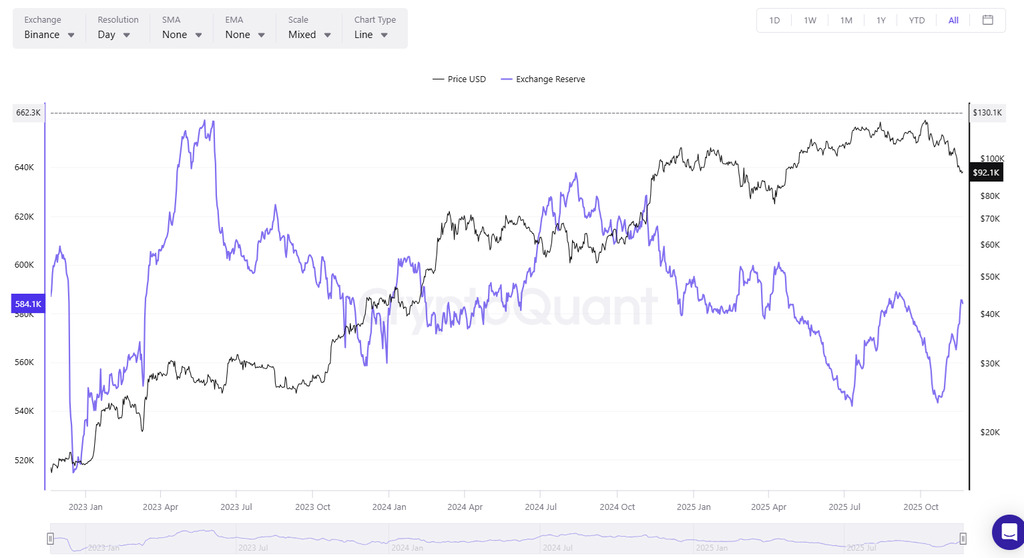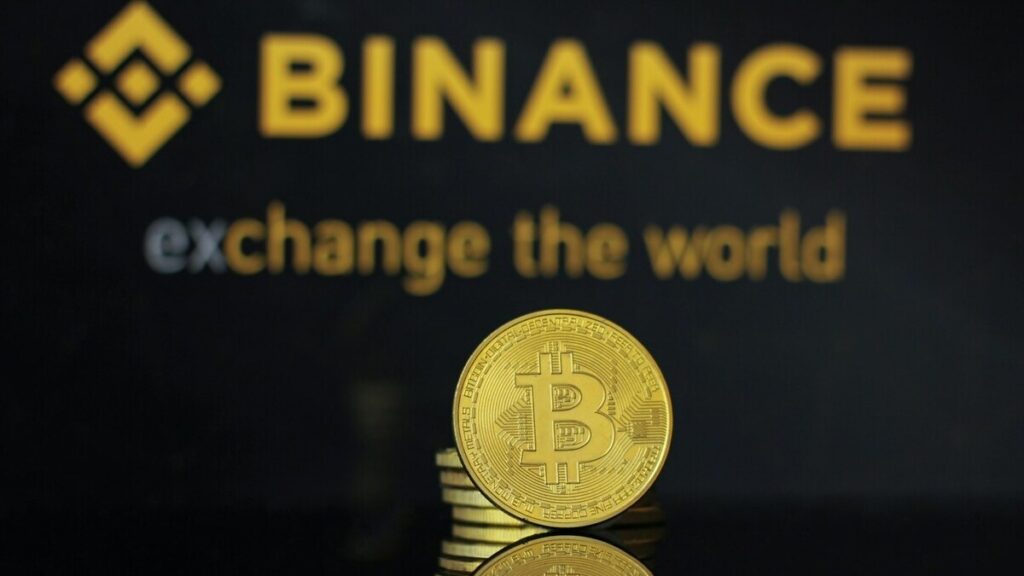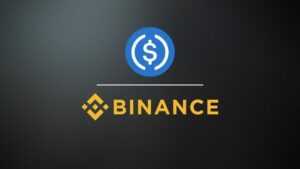TL;DR
- Bitcoin exchange inflows surge, led by Binance and Coinbase.
- Binance’s record stablecoin reserves provide strong exit liquidity.
- US traders dominate Q4 Bitcoin movements and ETF-related activity.
Bitcoin moves toward major exchanges again, marking another period of portfolio adjustments, profit-taking, and search for clearer direction. Exchange inflows stay elevated through November, reaching 580,000 BTC across centralized markets. The amount sits below last year’s levels, yet the new wave of spot trading activity and fresh deposits aligns with several dips under $90,000.
Binance leads with 163,800 BTC in deposits, followed by Coinbase at 130,000 BTC. As balances shift, BTC trades near $92,000, while brief drops toward $88,000 stem from long-position liquidations instead of broad selling pressure or signs of capitulation.
Binance Records Strong Inflows and Expands Its Role in Market Volatility
BTC inflows on Binance increase sharply from late October, following renewed appetite for spot trading. Price weakness accompanies the spike, as the market leader loses previous levels above $110,000.

Smaller exchanges like Bybit and OKX fail to attract similar deposit activity. Large movements appear concentrated among US-based traders, who often dominate Q4 flows. Coinbase also receives a portion of institutional BTC, partly tied to ETF turnover.
Binance continues to influence sell-offs. Large sales during downturns often deepen declines and trigger waves of liquidations. The exchange absorbs BTC during rallies for profit-taking and supports intense trading periods.

A record stablecoin reserve on Binance strengthens exit liquidity, allowing traders to move large amounts efficiently. A portion of incoming BTC also serves as collateral for derivatives positions, adding to trading volume.









